#hyper adaptation to capitalist alienation
Explore tagged Tumblr posts
Text

from a leftist perspective - which requires us to consider these types of issues within their proper social context - cluster b disorders can be understood as a hyper-adaptation to capitalist alienation - which would then mean that their behavior is a rational response to extremely effed up conditions.
people do not “behave” in a vacuum. when we think “crazy,” we think of wildly irrational, unpredictable behaviors that have no connection to the reality that “sane” people inhabit. but all behavior has context. mental illnesses, including cluster b disorders, are rational responses to the conditions of this anti-human society we are all immersed in, the reality we are all living in. some of us adapt to these conditions better than others, and some of us over adapt - as is the case with cluster b disorders. truth is that the “problematic” behaviors associated with cluster b disorders are actually pretty heavily rewarded in our society under circumstances that are deemed acceptable.
as leftists, we’re supposed to be all about “community” - building community, connection, interdependence, collective well-being. but the truth is that most of us haven’t spent much time thinking on this much deeper than meetings, actions, political work - all guided by our own internalized alienation under neoliberal competitive individualism - that anti-human system that starts hammering away at our humanness from the day we are born. we learn to tolerate it by dehumanizing ourselves and one another - we blunt our own humanity so we can keep plugging along, fulfilling the obligations imposed on us by this anti-human system.
and so we take on the role of oppressor, using the oppressors’ tactics, when someone is seen as disruptive of our shallow efforts to perform “community.” understand that banishment is violence. to deprive a human being of social connection and belonging is to inflict psychic pain and lifelong torment - that’s trauma. and trauma is where cluster b and other mental health diagnoses got their start.
as leftists, we need to broaden our ideas around what constitutes a “leftist space.” if we are serious about transforming society, we need to take ourselves seriously by incorporating counter-alienation practice into our day to day lives.
if we want to raise collective consciousness, we need to recognize the ways our own character has been shaped by social forces, and we need to learn how to recognize the ways those same social forces have shaped others, most especially those who are most severely impacted.
if we hope to decommodify social relations, we must make a conscious and deliberate effort to keep our spaces free from transactional dynamics that replicate market relations
if we are serious about building solidarity, we need to take ourselves seriously by developing community support structures that counter the isolating tendencies that neoliberal society has so deeply instilled in us.
to further isolate the people who have been hit the hardest by capitalist alienation is basically what we have been trained to do by the system. the entire point is to resist.
i am in no way minimizing or dismissing the harm that some people with cluster b disorders can be capable of - i am in the thick of it right now, my life has been a nightmare for the past year and a half and it’s not even close to over. i am hurt, i am afraid, and most of all, i am angry - because it didn’t have to get this bad. none of this shit had to happen and the fact that it’s STILL GOING—-
when we say that people need to be held responsible for the harm they cause, what are we even talking about? punishment? retribution? vengeance? banishment? what is it that you think propels the destructive behaviors we’ve come to associate with BPD? it’s carceral logic. the logic passed down to us by the hegemonic neoliberal order, that tells us to harm one another under the guise of “safety” - is pathologized when it’s turned onto us by those we have left behind.
what i’m saying is that we are them, they are us. and we need to start taking responsibility for the harm done to them as well as the harm we allow them to do to us. they do not have the power that the ruling class has. they could not cause such devastating harm if we were at all serious about building and practicing solidarity.
networks of genuine solidarity, community care, and interdependence mitigate that harm. but for as much as we like to talk about it, few if us have the faintest clue as to what that actually looks like, or how to turn it into action when it matters most.
#antipsych#antipsychiatry#psych abolition#cluster b#borderline personality disorder#narcissistic personality disorder#leftists#alienation#capitalist alienation#neoliberal competitive individualism#performative solidarity#hyper adaptation to capitalist alienation#counter alienation#de-alienation#anti human society#carceral logic#banishment#capitalist social relations#internalized alienation#mental illnesses are rational#neoliberal society is irrational#political work#community organizing#disability justice#healing justice#transform society#we are them#they are us#solidarity mitigates harm#we are responsible for all of us
6 notes
·
View notes
Text
Ketu Dominant Themes — 𝐍𝐚𝐤𝐬𝐡𝐚𝐭𝐫𝐚 𝐎𝐛𝐬𝐞𝐫𝐯𝐚𝐭𝐢𝐨𝐧 𝐒𝐞𝐫𝐢𝐞𝐬 (part 1) 𝐩𝐚𝐫𝐭 𝐨𝐟 𝟑
disclaimer: spoilers for all movies or shows mentioned.
the warnings: mentions of drug abuse, sexual violence, self-harm, genocide, mental disorders/illnesses, cannibalism and self amputation.
The most interesting theme within all the Ketu nakshatras is one that is unexpected, as Ketu is commonly associated with concepts of disconnection or isolation from society as a whole — given its frequent link to the 12th house. However, it is more about the interactions with the unseen forces within society than anything else. The 12th house also represents the collective consciousness and all the interconnected energies that come with it, which we all become deeply influenced by. Ashwini is the most sensitive Ketu nakshatra, as it is easily consumes and absorbs by these 12th house energies through the native, often leading to chaos and loneliness.

Ashwini Nakshatra embodies nothingness, the oldest energy in the universe. It exists in the space before actualized creation and after the rise of awareness that emerges from nothingness (or the cosmic void). It is very fitting that this is the first nakshatra, but it should also be considered the last Ketu nakshatra. The focus here is on the spirit's evolution. The energy found in this nakshatra is as undeveloped as it is chaotic, which is why evolution needs to take place — and this usually involves extremely harsh forces to tame it. In Ashwini, there is confusion or a lack of self-awareness regarding one's own identity. I am going to use some films as examples to explore this point.
First, I'll use the most typical Ketu-coded character; Ashwini Moon Christian Bale's Patrick Bateman in American Psycho. This film follows an investment banker who revels in the wealthy excesses of his superficial lifestyle, surrounded by others who do the same. His life is empty, mostly revolving around getting into exclusive restaurants, indulging in designer suits, and maintaining a meticulous morning routine. There is a general pressure to conform, and the Ashwini native is highly sensitive to these societal energies, which they absorb — driving them to compete and, eventually, to go too far. For Patrick Bateman, it’s no longer about conformity; it becomes an obsession, and these pressures push him into homicidal tendencies as an outlet. This film perfectly encapsulates modern-day consumerism, and it is, of course, an Ashwini native who descends into madness as a result of the empty, superficial yuppie culture he is subjected to.
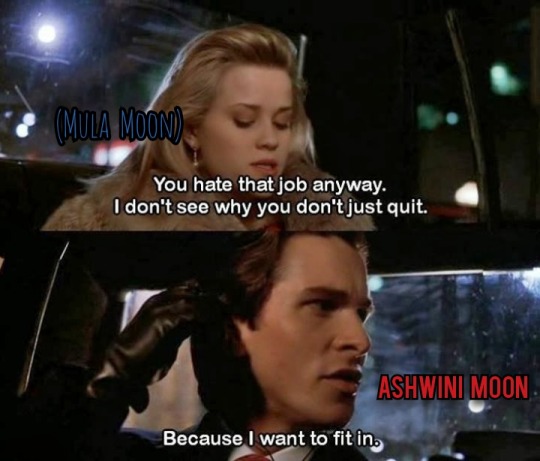
Nothing can fill the emptiness inside him, and he knows it. This crippling, painful awareness continuously fuels his violent self-hatred and his hatred toward others. This is why he remains trapped in a cycle of loneliness, surrounded by the same narcissistic, self-absorbed individuals who perpetuate this soulless culture.
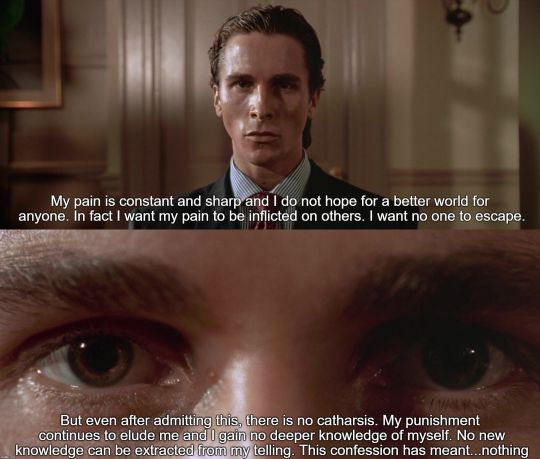
The movie was adapted from the book with the same name, written by Mula Moon Bret Easton Ellis whose own experiences inspired the book "American Psycho".
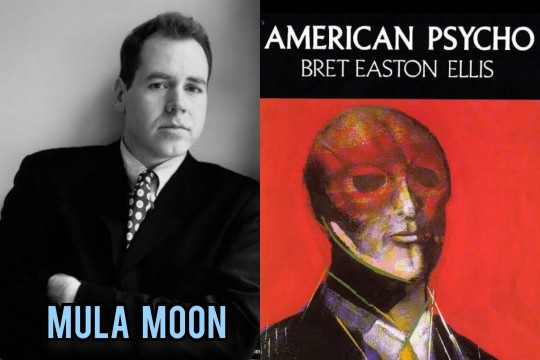
Quote from an interview; OregonLive (2010);
"[Patrick Bateman] did not come out of me sitting down and wanting to write a grand sweeping indictment of yuppie culture. It initiated because my own isolation and alienation at a point in my life. I was living like Patrick Bateman. I was slipping into a consumerist kind of void that was supposed to give me confidence and make me feel good about myself but just made me feel worse and worse and worse about myself. That is where the tension of 'American Psycho' came from... It came from a much more personal place."
-- Mula Moon Bret Easton Ellis
Now, onto the movie "Fight Club", which was directed by Magha Sun David Fincher, and stars Magha Sun Edward Norton and Mula Sun Brad Pitt.
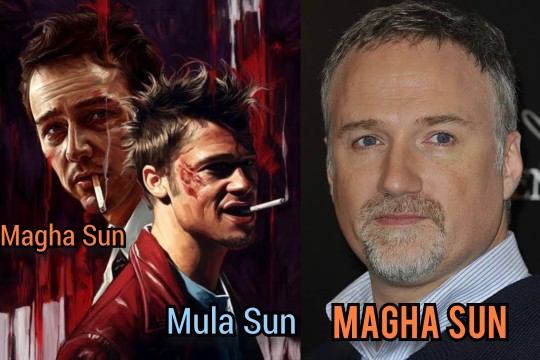
The most highlighted character from this film, played by Brad Pitt, is Tyler Durden, who plans on making a revolution to destroy the hyper-capitalistic, materialistic superficial culture that we saw destroy Patrick Bateman from the inside in "American Psycho".
(video - 🎧)
Of course, just like Ashwini Moon Patrick Bateman took his obsessive consumerism too far; Mula Sun Tyler Durden lays on the opposite spectrum, aiming to destroy modern society by blowing up all credit card companies and ruining the world's economy. Mula is related to destruction as it is ruled by Nirriti, the goddess of destruction. The oppressive forces that weigh on this Mula character, Tyler Durden, causes him into a spiral for freedom (9H), using extremities and acts of terrorism to be rid of ego/society. Whereas Ashwini, having no solid identity and just being undeveloped in nature, is more likely to conform; but so long as Ketu is there, there will always be an emptiness in the ambitious pursuit of things. Ashwini can grant excess wealth and fame, but with no inner fulfillment or balance, you see characters like Patrick Bateman. Or Daniel Plainview from "There Will Be Blood".
A movie directed by Paul Thomas Anderson who has Ketu in Magha, and stars Ashwini Moon, Mula Ascendant Daniel Day Lewis who portrays Daniel Plainview. Plainview is more Ashwini, as he is an extremely ambitious, capitalistic and competitive oilman.

His pursuit for wealth and power leads him to personal loneliness, isolation and emptiness, we see how Ketuvians become so drained by the energies they absorb in the pursuit of things. Similarly to Patrick Bateman, he not only hates others but himself as well and wishes for no one to succeed in life.


His primal competitiveness and self-loathing even drive away his only family, his only child. His adult son means to do his own oilrig business and cuts his partnership with him. But Plainview's unchecked ambition shows that even after attaining success and power, he literally goes ahead to disown his own son as he considers him competition now. And now he extends the same hatred he has for others to him. Further isolating himself; this validating his deep sense of loneliness that was always there with his self-loathing.

The film ends in an Ashwini fashion; in which Plainview goes into a psychotic meltdown and murders someone who he has had a long stewing hatred for.
(YouTube clip by me - 🎧)
youtube
I wanted to provide a brilliant video from the YouTuber "The Vile Eye", who explored the dark nature of this character; because it perfectly illustrates Ashwini nakshatra in a twisted way, especially in how Aries in this segment is influenced by Ketu forces. Everything about this character is every Aries stereotype you can think of from the top of your head, but Ketu exaggerates it to the point of extremity and tragedy.
youtube
Amazing video for anyone who wants to understand Ashwini at its extreme which can manifest in real life of course.
The series "Peaky Blinders" stars Ashwini Moon Cillian Murphy whose character faces moral dilemmas, as his relentless pursuit of power contributes to his moral ambiguity.
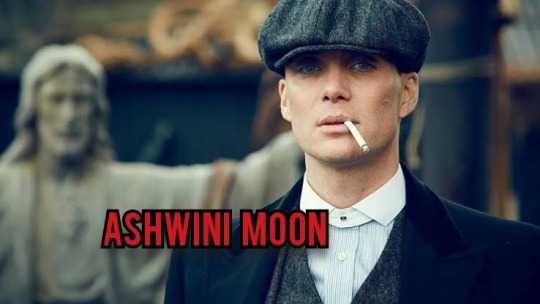
His ruthless ambition to become the most powerful in the criminal underworld is something I couldn't help but relate it back to Ashwini's drive & competitiveness.
The movie "Scarface" stars Ashwini Sun Al Pacino who plays Tony Montana. And fun fact, Tony Montana is loosely based and inspired by the real-life figure, Al Capone, who had Ashwini Moon, according to astrotheme — although take with a grain of salt as it conflicts with other data.

Both Tony Montana and Al Capone had unchecked ambitions and an unrelenting desire for power. In Ashwini, extreme power can be attained, and we saw how Tony Montana quickly rose to it (as Ashwini is the Star of Transport and it is associated with Shidhra Vyapani Shakti which translates to 'The Power to Quickly Reach Things'). Similarly, Al Capone was also driven by the desire for power, and he attained it.
Like Daniel Plainview in "There Will Be Blood", Tony Montana starts to experience isolation after all of his achievements. His chaotic behaviour contributes to his alienation, and he starts to feel intensifying loneliness, which seems to be a theme with this nakshatra. And this film also ends in Ashwini fashion; with absolute chaos, the psychotic unraveling of Tony and of course death.
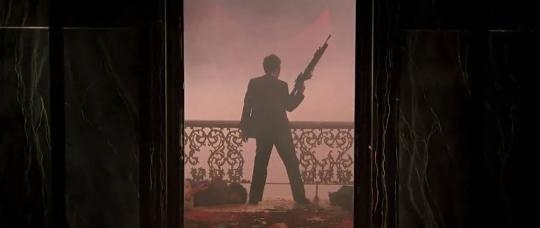
I wanted to also add in the movie "Nightcrawler" which stars Mula Sun Jake Gyllenhaal who plays a character willing to go to the extreme lengths for success and personal achievement, to the point of exploiting others, unconcerned with ethical boundaries.

He has a distorted view of success and has an unchecked, ruthless ambition. He is also a socially isolated character, behaving inappropriately as he is disconnected from social norms. In his obsessive & relentless pursuit of success, he is devoid of humanity. Had to mention this film because these themes are not exclusive to Ashwini.
But as I did mention, Mula natives are more likely to be aware of societal pressures and these natives often feel deeply disturbed by them. In the film "Falling Down", Mula Moon Michael Douglas plays a character who has become disillusioned and is now aware of the pressures and oppression caused by the modern-day life. This movie is literally directed by Magha Sun Joel Schumacher.
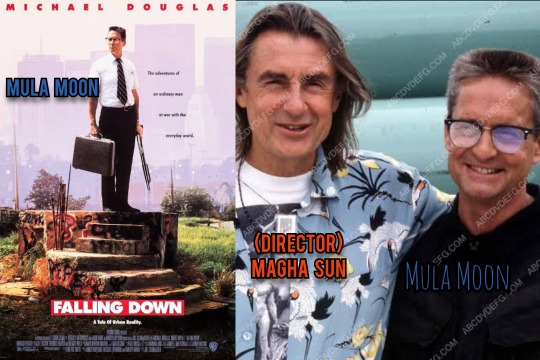
He confronts many issues such as homelessness and crime, which are heavily rooted in the greedy, capitalistic system of modern society. But he becomes violent and chaotic himself, going into a descent to madness (from absorbing the energies felt by the collective who feel the weight of these oppressive forces within society). This movie deals with the consequences of unchecked rage, a theme shared in all Ketu nakshatras.
The film "Taxi Driver", which stars Magha Sun Robert De Niro and is directed by Magha Ascendant Martin Scorsese, depicts a man who suffers from extreme loneliness, alienation from society, and struggles with existential crisis. The film explores social decay; such as social disparities, the disillusionment of our main character to society's ills, crime, poverty etc. He goes into a descent into vigilantism, using violence as a catharsis which is a common thing for these Ketu nakshatras (mainly Magha and Mula as it looks at societal frustrations and the emptiness in life/modern culture).
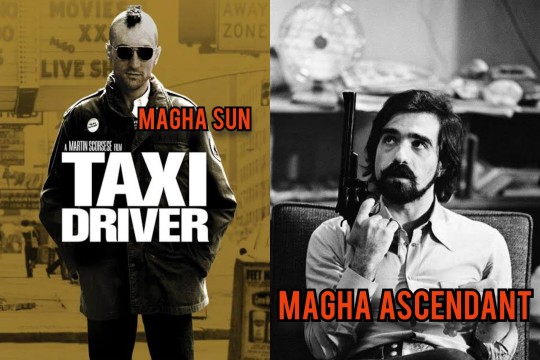
The character also suffers from a possible case of untreated mental illness, and insomnia — and this seems to be a theme with all Ketu nakshatras in general.
Another film where the main character suffers from extreme insomnia is "The Machinist", starring Ashwini Moon Christian Bale whose character's insomnia and untreated mental illness literally contribute to his isolation and alienation.

And the film "Fight Club", in which Magha Sun Edward Norton plays an insomniac character who has dissociative identity disorder. And his split personality is interestingly played by Mula Sun Brad Pitt.
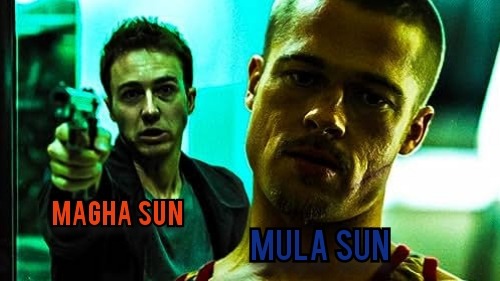
Then the film "Insomnia", directed by Ketu in Magha Christopher Nolan, starring Ashwini Sun Al Pacino who plays an insomniac detective who faces some mental challenges.
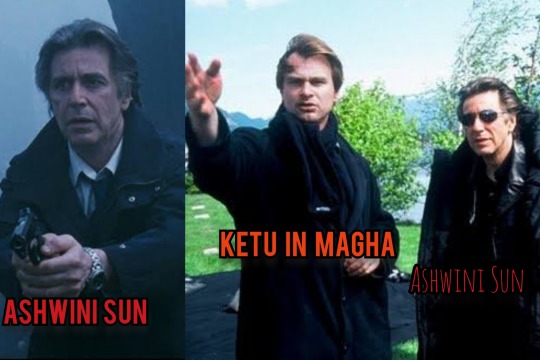
There is a spiritual belief about insomnia which suggests there may be a disturbance in one's spirit; unresolved issues that have been long reppressed may be linked to an imbalance of energy within the body. This imbalance causes restlessness and mental problems. This idea aligns with Ketu and the 12th house, which deal with the unconscious — particularly deep-rooted traumas and the ways in which they affect us and those around us. It isn’t just about traumas; it can also stem from the repression of internal suffering caused by loneliness or external pressures. We see this with Patrick Bateman, whose only outlet is literal murder, or Tyler Durden's "revolutionary" fight club, which causes more destruction around him as planned. Both characters violently act out from these unaddressed, decaying energies within themselves and within society.
The series "Sharp Objects", directed by Magha Moon Jean-Marc Vallé, mostly deals with family traumas, but also shows how those traumas and unresolved energies literally cause death and chaos around them.
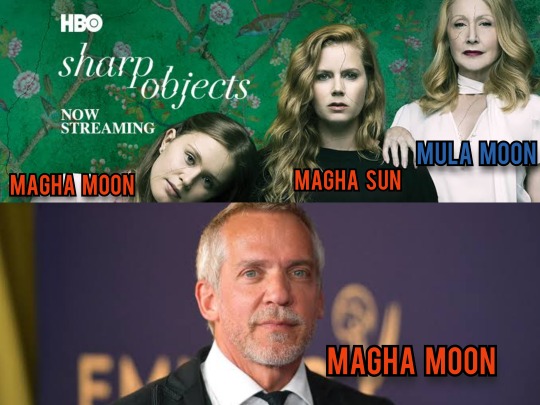
Camille Preaker, played by Magha Sun Amy Adams, is deeply traumatized and troubled. She has a history of self-harm and bears many scars on her body; her self-destructive behaviour is a coping mechanism for the trauma she experienced in her youth (sexual violence by a group of boys and witnessing the slow, preventable death of her sister). Then we have her younger half-sister Amma, played by Magha Moon Eliza Scanlen, who has a hidden dark side shaped by the family’s troubled history and generational trauma. By the end of the series, we discover that Amma is the killer responsible for the violent murders that have shocked the townspeople of Wind Gap. Amma is behind all the gruesome deaths of the girls whose teeth were removed.
While Camille’s coping mechanism involves cutting herself as self-punishment for the guilt she harbours from her sister’s death, Amma literally commits homicidal acts. This reflects just how damaged and complex their trauma is, as well as the toxicity of the community they grew up in. Their mother, played by Mula Moon Patricia Clarkson, has Munchausen syndrome and is responsible for the death of her oldest daughter. Camille witnessed her sister’s suffering and death, viewing her mother as a monster — and now sees her little sister as an extension of her mother.
This series is an excellent example of how unchecked personal trauma can impact others, especially those who are uninvolved. It also shows how much destruction can be caused, as seen with Amma killing other girls as an outlet — similar to Patrick Bateman's. This is why I now realize how wrong I was about Ketu. Ketu is not necessarily about isolating from society. In relation to society, Ketu represents the unaddressed, rotting energies within it, always tying back to individuals’ personal and generational traumas. It makes sense that Magha relates to ancestral roots and the origins of oneself, including the origins of one’s trauma.
Now onto the film "Nocturnal Animals", which is directed by Magha Sun Tom Ford, stars Magha Sun Amy Adams and Mula Sun Jake Gyllenhaal.

Amy Adams plays Susan, a successful art gallery owner. She receives a manuscript for a novel called Nocturnal Animals sent to her by her ex-husband Edward, played by Jake Gyllenhaal. The book is extremely violent and tragic, but it turns out to be a symbolic reflection of their relationship and marriage, tying into Ketu themes of unresolved trauma and getting to the roots of it. The book forces Susan to confront how much her actions hurt Edward.
The movie focuses on confronting one's past and demonstrates how trauma continues to shape the lives of those involved. It also shows Susan still has unresolved issues, evident in her repulsed reactions to the extreme parts of the novel.
The movies "Split" and "Glass", stars two Ashwini Suns, Anya Taylor Joy and James McAvoy. McAvoy's character, Kevin, has dissociative personality disorder and these different personalities exist to keep him safe. His trauma is so extreme and deeply painful that it manifested into the creation of The Beast, his most dangerous and superhuman personality. Three kidnapped girls are prey to The Beast as they end up being devoured by it but only one survives — and that's Anya Taylor Joy's character, Casey.
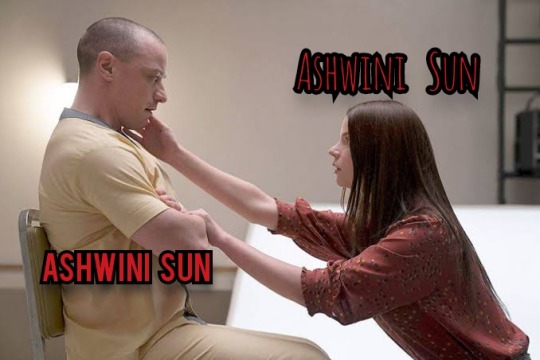
The reason why she doesn't fall victim is because she, too, has suffered extreme trauma and her resilience through it is what creates her immediate connection with Kevin. It is when The Beast sees her scars that he calls her pure, implying that those who have been damaged are the ones who are truly evolved.
(YouTube clip by me - 🎧)
youtube
Also, "Split" is another example of how deeply repressed energies and traumas of one can ruin everything around them and victimize those close to the Ketuvians (usually uninvolved people's lives being violently taken; "Split", "Sharp Objects", "American Psycho", "Falling Down" etc.).
Ashwini Moon Zendaya in the series "Euphoria" plays a character, Rue, who has been through a significant amount of trauma, including the passing of her father. She uses self-destructive ways to cope with her deep emotional pain and grief, very similarly to Magha Sun Amy Adams's character in "Sharp Objects". Rue uses drugs to numb herself from her harsh realities. There is a moment in the series in which she has a chaotic meltdown.
(YouTube clip by me - 🎧)
youtube
Something I now understand with Ashwini is how explosive, volatile and scary its ungrounded energy can be — exactly why I'd commonly associate it with hysterical meltdowns which can lead to accidental or unplanned homicidal acts or other forms of harm/self-harm. This scene of Rue is vaguely taking me back to Ashwini Moon Christian Bale's spiraling and meltdowns in "American Psycho".
(YouTube clip by me - 🎧)
youtube
Ketu, especially with Magha, seems to cause erratic behaviours when its natives aren't purified of their long-accumulated baggage in their unconsciousness — exactly why the 8th house is also ruled by Ketu, as Scorpio shares this particular theme. As long as there is deep disturbance and imbalance in the body, there is no rest for the soul – even for future incarnations to come.
But now, I want to touch on the senseless harshness of Ketu. Remember, this energy embodies the eternal, sucking void. Mula nakshatra relates to the center of the cosmic void and delves straight into its roots. Ashwini has already risen from it, while Mula is centering itself back into it. Mula is where we seek an awakening to the truth behind reality. What lies on the other side of the cosmic void?
Truth is sought in Mula; but it seems in Ashwini nakshatra, it is understood that chaos and nothing is the absolute truth of reality. There is no inherent meaning to anything, which may sound nihilistic, but it is precisely what makes life beautiful.
In the film The Pianist, written and directed by Magha Sun Roman Polanski and starring Ashwini Sun Adrien Brody, the story begins on a warm note with a well-put-together family and a handsome, talented Ashwini man who dreams of being a pianist. However, things take a drastic turn.
We witness a once bright-eyed man transform into a shell of his former self after enduring harrowing events. The events continue to worsen, growing more tragic until there is no longer even a sliver of hope. The majority of the film is filled with despair, senseless cruelty, and the slow annihilation of the protagonist’s soul.
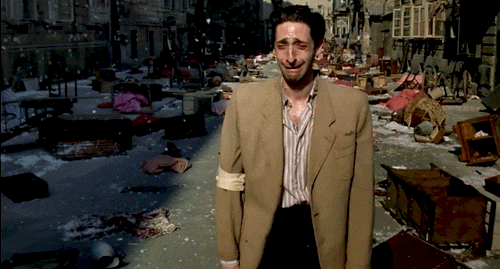
I've never watched a film more Ketuvian than this — surrounded by genocide, death, and complete isolation, consumed by one's own lonely misery. One moment, you think a character might somehow make it out alive because they have the conviction and drive to survive, but the film immediately takes that hope away as they helplessly die. You think the protagonist might finally see some light, and the film even provides brief moments of comfort, but it ultimately shows how everything stays horrific.
There are no answers to any prayers, as suffering is ongoing. This tone creates another layer of entrapment, and you watch as the character resigns himself to letting life do whatever it wants to him, trapped in a world where he is helpless. With Ketu, you come to realize there was never any security at all.
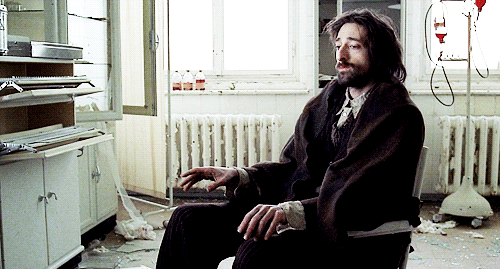
But his survival at the end makes you question why he even went through that to begin with. There was no lesson to be learned. Why did his friends and family die, but not him? In the end, he became the successful pianist he had dreamed of from the beginning. He was exceptionally talented from the start; these events took everything from him except his passion for the piano.
What he went through was senseless, as Ketu has no prime motivation. Saturn will push you through the worst so that you can reach a level where you can attain all of your reaped rewards, but Ketu doesn’t care about what you get in the end – that's also Rahu's objective, as Rahu deals with ego. Ketu deals with the evolution of one's soul, and that usually involves its annihilation.
The film "Society of the Snow" is literally directed by Ashwini Moon J.A. Bayona, based on real life events. There's a documentary based on these events as well, "Stranded: I've Come from a Plane That Crashed on the Mountains", directed by Magha Moon Gonzalo Arijon.
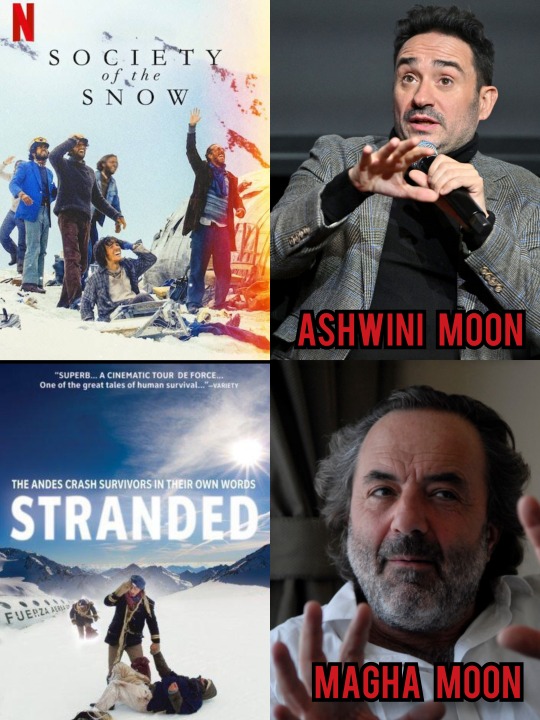
Now, in Society of the Snow, there is a tone of hopelessness set in the film because of the gruesome reality these characters (based on real-life people) experience. Never in their lifetime did they think that everything would change so drastically from just living the average life of normal teenage boys — echoing the opening of "The Pianist". These characters, who were part of a rugby team, get on a plane that would soon crash onto a glacier surrounded by endless, cold, harsh mountains — with just a piece of the wrecked plane remaining, which they take shelter in. The protagonists are surrounded by the dead bodies of friends who did not survive the crash, signifying total despair and loss. They couldn’t even sleep; the first night spent with many of them crying and wailing out loud, nearly freezing to death.
A day after, a rescue helicopter searches for them and they all scream out for help. But the helicopter misses them, barely noticeable under all the glacier that surrounds them. This is when the sense of hopelessness starts to intensify as the story progresses. Now that the chances of being rescued remain at zero, they realize they can’t ignore their growing hunger anymore. They all have no choice but to eat the flesh of the dead bodies, after running out of chocolates, and we see how these decisions mentally challenge some of the characters.
It is truly tragic that they were stranded, isolated from the world, and in complete despair every waking day, for a span of 72 days. After being rescued, we see just how malnourished they were from the looks of their bodies. They come back home bone-skinny and depleted. The monologue in the ending scene tells us how the survivors wondered: "Why didn’t we all get to come back [home]?" "What is the meaning of it all?" These were the questions I wondered for the movie "The Pianist".
Ashwini Moon J.A. Bayona also made the film "The Impossible", which is about survival and resilience — based on real life events. Much like "Society of the Snow", it also has a sense of complete despair and there is an involuntary separation of a family (which reminds me of "The Pianist" in which Ashwini Sun Adrien Brody's character is also separated from his family in the story).
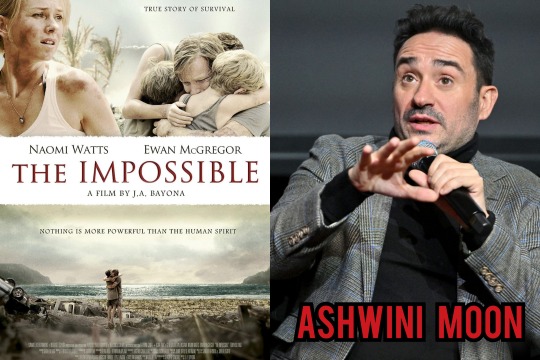
"Nothing is more powerful than the human spirit", it writes on the poster.
"Nowhere", is directed by Ashwini Moon Albert Pintó. It's a survival thriller about a pregnant woman who finds herself isolated from society as she's drifting in the sea trapped inside a container. Because of her newborn baby, she is forced to survive and protect her child even when there is no hope. The reason she's even in the container is because she was fleeing a society of a dystopian future in which women & children are caged and murdered (her attempt to run away from oppressive, societal forces leads her to total isolation).

And we also have the film "127 Hours", directed by Ashwini Moon Danny Boyle, starring Ashwini Sun James Franco who plays Aron Ralston, whose right arm becomes trapped against the canyon wall when he was on a solo canyoneering trip. When he is unable to release himself, we realize the severity of his situation. He is completely isolated and alone. His own supplies have run out and he's losing his mind. The struggle for survival and one's own helplessness is a theme of Ashwini nakshatra as this drives one into taking extreme measures for freedom — as he resorts to cutting his own arm off.
These themes seem to speak of the power and resilience of the human spirit, as emphasized in "The Impossible" and "Society of the Snow". Our ability to survive even just our own personal traumas must be a testament to our spirit being an extension of the Higher Power which is behind the happenings of all of these senseless yet significant experiences and events we go through.
It is in Ashwini that one's experience through harsh forces contributes to the spirit's evolution after total annihilation, which leads us on the path towards moksha.
Ketu is very pure by nature, and it wants to destroy impurities. The repression of one's accumulated dirt can manifest in destructive tendencies. By facing one's true inner self and embracing your entirety is how you embrace Ketu in general. But one must go deep and inward. All three Ketu nakshatras deal with getting to the roots for this reason.
Ashwini is ruled by the Ashwini Kumaras, gods of medicine and healing, also known as divine physicians. In order to heal, one must get to the root of all disturbances to create the perfect medicine for healing. As Ashwini is ruled by the 1st house, this involves getting to the roots of oneself for self-liberation. Magha, on the other hand, is about tracing your own existence back to the existence of others — usually family members and ancestors. Magha relates to generational trauma and shining light on it in order to become freer.
Mula is symbolized by the roots of a tree, and "mula" translates to "roots." It signifies ancestral roots as well, but primarily the truth. Mula is where disillusionment takes place as one gets directly into the roots of everything, going right into the galactic center — which can also signify going right into the roots of our demons and letting all of that rotting energy burn from your body. After this purification process, one's consciousness raises by default.
Ashwini has strong, undeveloped energies that can be tamed and grounded to be properly channeled. In order to achieve this, one must let go of poisonous impurities so that they are no longer controlled or possessed by unseen forces. It is in Ashwini that we know of the interconnection of the collective consciousness, which was secretly discovered in Uttara Bhadrapada and remembered in Revati. Ashwini nakshatra is extremely sensitive to outward energies, as are the rest of the Ketu nakshatras. Every individual's consciousness is affecting the whole world in some way. This, being a Ketu theme in general, describes the whole energetic field of the world and how we each play a part in it and affect each other's lives.
As all Ketu nakshatras deal with getting into the roots of things, we must get dirty by digging into our own roots. These unconscious triggers, which form our Shadow Self, contribute to how we interact with the world and other people. There is always the capacity to harm or further traumatize others because of our own unchecked, hidden troubles.
#ashwini#aries#magha#leo#mula#sagitarrius#1st house#5th house#9th house#vedic astrology#astro observations#astrology#sidereal astrology#nakshatra series#vedic observations#sidereal observations#Youtube
520 notes
·
View notes
Note
A weird thought that kind of hung out in my head for a while that is sort of relevant to this blog's theme, but also kind of isn't, but I'm honestly not sure, but I have no better place to dump it into, so whatever. Feel free to ignore this if you're not interested >>
Yautja. Predators. However you want to call them. They have a very particular, hunting and honor-centric cultural mindset. But. What would it be like for someone in their culture to just... not be into that? There are people who are basically entirely averse to romance, in spite of how central it is in our culture, so how would some who is, uh... akynig, not interested in hunting? And how would such a person, perhaps, adapt to another society, lacking this aspect of Yautja culture but carrying across many others?
The worldbuilding nut in me is always excited about those things but it is a very rare opportunity to discuss it in any manner >>
i dont rly know anything abt the predator film franchise so i cant rly add much but i do enjoy the idea of like. alien cultures and what that means for the individuals within that culture.
idk how comparable this is but i was just recently watching a video that was talking abt the ferengi from star trek and how upon their original introduction they were kinda this one note species because their sole characteristic was being a hyper capitalistic culture built around hoarding wealth, but in deep space 9 we start to actually see individual ferengi characters outside the context of this monolithic cultural concept and come to understand that their greed is not like some innate personal trait but the result of the values and demands of ferengi society.
theres def a larger discussion to be had abt the way a lot of popular scifi tends to narrow entire planets worth of people down to singular traits and how thats kind of a major weakness when it comes to like world building and imagining alternate societies, but when thats a thing the franchise is already doing it does open up an interesting avenue of like, how many ppl within this culture actually share this valued trait? how many are just going along with it bc its what you do? how many have so deeply internalized it that even if removed from this society and its rules they would unconsciously mirror it? is there a space for counter-culture in this world?
it seems like itd be harder to analyze stuff like that in the context of predator movies tho since, from my limited understanding, it seems like the yautja were at least originally designed simply according to what would make them serve best as a scary antagonist. i do think its cool tho that there seem to be a lot of fans who are trying to give their species more depth and complexity than the source material affords them. again tho im probably missing a lot of actual context lol.
10 notes
·
View notes
Text
Degenerations – Between Pride and Gender Victimhood
I am an anarchist, I am not a feminist because I see feminism as a sectarian and victimist withdrawal, I have never made any gender discrimination although I don’t use gender-friendly linguistic conventions, on the contrary I often use dirty politically incorrect language. I think that the annulment of gender privilege and similar oppression is already contained in the search for anarchy, that is to say in the practice of anti-authoritarian relations, and should be cultivated there. Ah, I forgot, I loathe consciousness-raising in public meetings and I also consider assemblies to be blunt instruments. I understand and also have the will to meet. But I see how all too often the assembly degenerates into sterile self-representation.
You see nowadays you risk having to start off with such a preamble in order to enter the thicket of clichés on gender and feminism, disentangling yourself in the intricate incapacity to relate to the anarchist galaxy, with a range of behaviors going from hyper-emotiveness to the bureaucratic calculation of what stand (and degree of negotiable compromise) to take in a struggle. I don’t think that authoritarian and sexist behavior can be fought by trying to spread new linguistic conventions or by cooking up shreds of mainstream indignant rhetoric (among which #nonunadimeno [enough is enough], the femicide count on TV, pride, red shoes and rainbow ribbons) in an alternative sauce.
Rather these should be recognized as signs of yet another operation of the deconstruction of real meaning and recuperation in act. Convinced that one is opposing them, in actual fact one is adapting to the very behavioral and normative codes conceded by dominion as ways of releasing tension.
It’s nothing new that economic and political power is tending to swallow up and re-digest everything, faster and faster; consider for example the pearls of anti-sexist, anti-racist or whatever it might be neo-conservatism and conformism that are being dispensed by the media every day.
I believe that the first misunderstanding is the inability to put certain kinds of behavior into context, within what should be a wider critique of relations and communication and interaction between individuals in the anti-authoritarian sense, reducing them to the level of questions of gender.
Gender categorization, in LGBTI (XYZ…) style, should be left to those who need to feel themselves a protected category, in pigeonholes more suited to a Linnaean categorization of individuals than free bodies and minds. Instead, we find such pigeonholes in anti-authoritarian milieus, which should already have internalized their refusal.
By the way I’m far from believing that so-called liberated spaces really are such, in fact they often become parking lots for various forms of malaise and instead of enhancing the quality of life and relationships they risk lowering it even more.
For example it’s not possible to see every inability to interact in a meeting as sexism, authoritarian imposition or gender violence: I read in a pamphlet [1] that was around last year stigmatizing the latent violence in relations between comrades ‘the oldest exercises power over the youngest, those with more experience impose themselves on those who have less, whoever is stronger on the not so strong, mirroring the relations of the existent we say we want subvert.’
This is supposed to be a critique of authoritarian attitudes in anti-authoritarian milieus and it would be valid, were it not that it banalises and flattens everything: there is a fundamental difference between imposition of strength and the expression of experience. The inability to express oneself or to act is neither authoritarian nor anti-authoritarian, and can only be solved individually… otherwise we come to the idiocy of praising inability and inaction.
The concept of emotive violence or the violation of emotional integrity is even more ephemeral, because it promotes this analytical junk among anti-authoritarian individuals who should have far sharper critical weapons and practical capacity of intervention. As well as emptying of meaning the inflicted and brutal violence it is being compared to.
How can we claim to engage in an unrelenting struggle against authority and dissertate on revolutionary and liberatory violence if we cannot even react individually to some ‘undesired comment in the street’ (by taking it for what it is, and dealing with it accordingly with the person who spat it out) or keep up an animated discussion during a meeting without having recourse to the shield of violated sensitivity? Why do we find ourselves reading the disarming and obvious idiocy that advises making love with a woman in order to avoid an unwanted abortion? [2] Why codify, even in the field of gender, only for “female gangs”, like conquest, self-defence from aggression and harassment? Isn’t this a problem common to all genders among liberated beings?
Why should we revisit the most outworn products in the wardrobe of 1970s feminism, such as separatist meetings… maybe calling them workshops (a really ugly term that combines work and shop, borrowed from business conventions and unworthy of free discussions)?
I read the spectre of the same reductive and banalising mechanism in another recent publication, the Italian edition of the Rote Zora claims [3], i.e. the intention to sensitize only a female audience about a group of women who carried out armed struggle in the 1980s and 90s in Germany, insisting on the choice of gender, of very great interest on some feminist topics, as a privileged discriminating factor for taking them out of oblivion… given that one doesn’t want it ‘to belong to official history. It is written by men’ [4]… What?!? Is it not that official historiography tends to not talk about them because they were angry, not angry feminists? Just as it doesn’t deal with – or distorts – the history, actions and writings of so many other angry men and women? The partial vision is not that of Rote Zora who experimented their own path of individual and collective struggle and liberation in the context of wider anti-imperialist and anti-capitalistic action, but of those who try to make a flag out of it in order to give more credibility and specific weight to their own theorizing, to then reduce themselves to looking for ‘paths of self-defence’.
Why entrench oneself in a ‘feminist and lesbian’ discourse [5]? Why yet another protective cage, rather than develop the beauty and infinity of more advanced ideas of the critique of domination (not only gender), put forward and tested?
‘Sisterhood’ has always seemed to me to be a form of allusive alienation of transversal political alliances between oppressed and oppressors, between ‘inter-classist’ as it has become fashionable to say again… adverse parties. I also happened to see a booklet [6] recently containing an Italian feminist’s interviews of some female veterans of the Spanish revolution in 1936, aimed at finding a questionable ‘sisterhood’ between women anarchists engaged on the front line (and in the background with Mujeres Libres), the POUM and Stalinist women.
It was quite significant that almost centenarian anarchist revolutionary women were far more lucid and open in their critique about the limitations of feminism than their interviewer imbued with 1970s’ clichés was: in the extreme calm of a life lived to the full, they were able to explain simply the equal relations between male and female comrades, and how they managed to ridicule and neutralize the machismos that emerged among the most retrograde and stupid of their comrades. In short the practices and theoretical contribution of these women are far more advanced along the path of liberation of the individual and the negation of authoritarian dynamics than those of feminists who glean from their experiences, defending simulacra of struggle instead of the struggle itself. The need for auto-da-fé, the ‘deconstruction of one’s male privileges’, the search for separate places for discussions, self-awareness and self-analysis in public seem a little too much like signs of these times of over-exposition and woolly thinking, parading ‘struggles’ by category and interior struggles, to end up not struggling at all.
Anna,
Women’s prison of Rebibbia, Italy
October 2018
[1] Violenza di genere in ambienti antiautoritari ed in spazi liberati [Gender violence in antiauthoritarian milieus and in liberated spaces], Italian edition translated from Spanish in 2017[2] Critica all’aborto [Critique of abortion], Jauria – Trans-feminist publication for animal liberation, issue 1, Summer/Autumn 2015[3] Rote Zora – guerriglia urbana femminista [Rote Zora – Feminist urban guerrilla], Autoproduzione Femminista, 2018[4] From the introduction to the same book[5] Which the Rote Zora women themselves didn’t think relevant. From a 1984 interview with Rote Zora: ‘Some of us have children, many others don’t. Some are lesbian, others love men’, page 51, ibidem[6] Donne contro [Women against], Isabella Lorusso, ed. CSA editrice, 2013
#Anna Beniamino#Féminas Brujas and Insurrectionalists#insurrectionary anarchism#post feminism#post feminist anarchy#queer nihilism#anarchism#communism#anarcho communism#feminism
13 notes
·
View notes